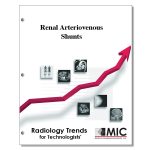

Renal Arteriovenous Shunts
The classification, imaging features, and an endovascular treatment strategy based on the angioarchitecture of renal arteriovenous shunts are described.
Course ID: Q00502 Category: Radiology Trends for Technologists Modalities: CT, MRI, Sonography, Vascular Interventional2.5 |
Satisfaction Guarantee |
$29.00
- Targeted CE
- Outline
- Objectives
Targeted CE per ARRT’s Discipline, Category, and Subcategory classification for enrollments starting after February 15, 2023:
[Note: Discipline-specific Targeted CE credits may be less than the total Category A credits approved for this course.]
Computed Tomography: 1.50
Procedures: 1.50
Abdomen and Pelvis: 1.50
Magnetic Resonance Imaging: 1.50
Procedures: 1.50
Body: 1.50
Registered Radiologist Assistant: 2.50
Procedures: 2.50
Abdominal Section: 2.50
Sonography: 1.50
Procedures: 1.50
Abdomen: 1.50
Vascular-Interventional Radiography: 2.50
Procedures: 2.50
Vascular Diagnostic Procedures: 0.50
Vascular Interventional Procedures: 2.00
Vascular Sonography: 1.50
Procedures: 1.50
Abdominal/Pelvic Vasculature: 1.50
Outline
- Introduction
- Classification of Renal AV Shunts
- Etiology
- Traumatic Renal AV Shunts
- Nontraumatic Renal AV Shunts
- Clinical Features
- Imaging Features of Renal AV Shunts
- Normal Anatomy of Renal Arteries and Veins
- Imaging Features of Renal AV Shunts
- US
- CT
- MR Imaging
- DSA
- Endovascular Treatment
- Techniques
- Type III Nontraumatic Renal AV Shunts
- Particles
- Liquid Embolic Materials
- Absolute Alcohol
- NBCA
- Onyx
- Type I Nontraumatic Renal AV Shunts
- Type II Nontraumatic Renal AV Shunts
- Traumatic Renal AV Shunts
- Postembolization Care
- Conslusions
Objectives
Upon completion of this course, students will:
- identify the indications for treatment of renal AV shunts
- discuss the advantages of endovascular embolization compared to surgical treatment of renal AV shunts
- identify the complications of endovascular embolization of renal AV shunts
- describe the types of AV shunts using the Cho classification
- discuss the traditional classification of non-traumatic renal AV shunts
- classify cirsoid and aneurysmal non-traumatic renal AV shunts using the Cho classification system
- identify the most common cause of traumatic renal AV shunts
- identify features related to traumatic renal AV shunts
- classify renal malformations using the Cho classification system
- identify the causes of renal AV fistulas
- define nidus
- identify symptoms of patients with renal AV shunts
- discuss the cause of arterial hypertension in patients with renal AV shunts
- identify the subdivisions of the renal artery which are commonly involved in nontraumatic renal AV shunts
- describe the imaging features of renal AV shunts on ultrasound
- identify the limitations of ultrasound in the evaluation of renal AV shunts
- identify optimum CT parameters to detect renal AV shunts
- describe the uses of time resolved CT angiography in the evaluation of renal AV shunts
- identify the limitations of CT in the evaluation and follow-up of renal AV shunts
- identify the MR imaging features of renal AV shunts
- identify optimum technical factors for 3D contrast-enhanced MR angiography to image renal AV shunts
- identify the uses of DSA in the evaluation of renal AV shunts
- discuss features of renal AV shunts to be evaluated using DSA in pretherapeutic planning
- describe techniques to image high flow renal AV shunts using DSA
- identify the most appropriate modalities to perform post embolization follow-up imaging of renal AV shunts
- describe successful embolization of renal AV shunts
- identify factors contributing to the appropriate selection of embolic material when treating renal AV shunts
- discuss the complications of the use of particles in patients with type III nontraumatic renal AV shunts
- identify embolic materials that are not recommended for treatment of nontraumatic renal AV shunts
- describe the effects of absolute alcohol on the vessel and how this contributes to embolization
- discuss the complications of the use of absolute alcohol in the treatment of renal AV shunts
- identify contrast material which is used with NBCA for treatment of renal AV shunts
- identify the concentration of NBCA most often used to embolize type III nontraumatic renal AV shunts
- describe the key points for injection of NBCA in the treatment of nontraumatic renal AV shunts
- identify special consideration in catheter selection when using Onyx embolic material
- discuss the complications associated with the use of Onyx embolic material for treatment of type III nontraumatic renal AV shunts
- discuss techniques to minimize renal infarction during embolization of type I nontraumatic AV shunts with detachable coils
- identify patients with large AV fistulas who are not candidates for embolization using vascular plugs
- identify the structures which must be embolized to ensure successful occlusion of type II nontraumatic renal AV shunts
- compare the embolization techniques of type I and type II nontraumatic renal AV shunts
- be familiar with the post-embolization prophylactic medications administered to patients
- know the most common complication following embolization of renal AC shunts
